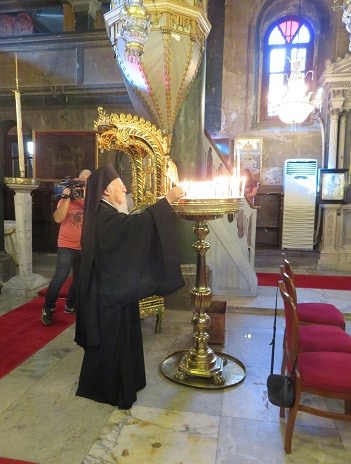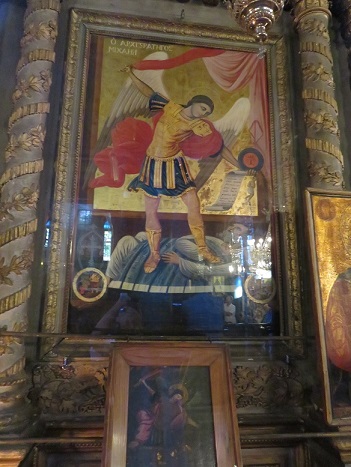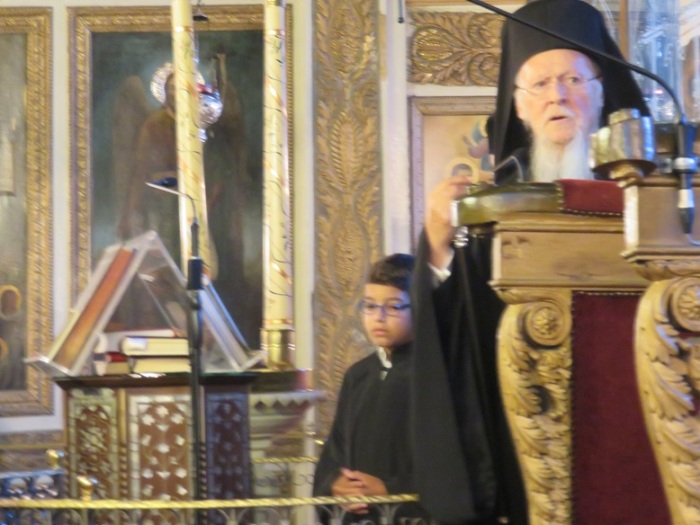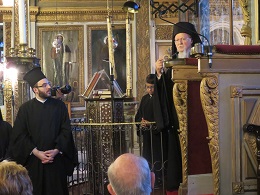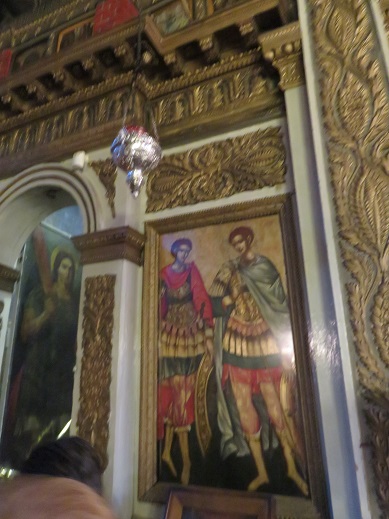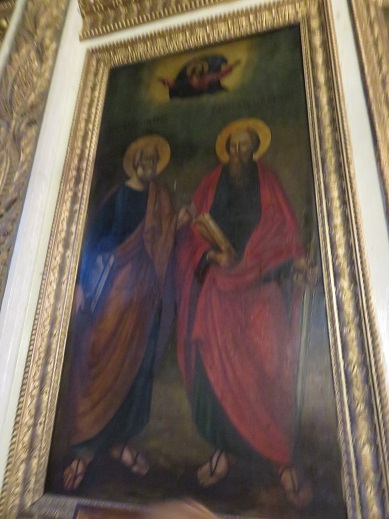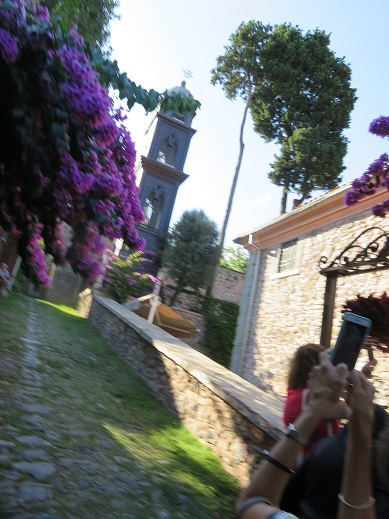
“Only the Dead have seen the end of war”. – Plato

The Kapogiannis Travel excursion from Tripoli’s, Greece, of the Dalmatian coast concluded
July 30 with a visit to the WW II military cemetery in Bularat, known as the Greek village of Vouliarates, Southern Albania, The six-day excursion was under the leadership of Kostoula Kapogiannis and Agia Saranta guide Ioan Mitrou.

Our visit began with a patriotic ballad played in the bus. Let’s visit the glorious time in WWII (1940) when courageous, poorly equipped Greek soldiers defeated El Duce (Italy) went to Koritza and took Argyrocastro (Gjirocastro). All of United: Greeks, North and South Epirus as one nation. Our children and grandchildren must not forget. They must remember our blood written in the Albanian campaign. Greek Blood.” Constantine Katsiftas was killed on October 28, 2018. Dimitris Filippidis, journalist/Hellas FM radio/ President of Pan Macedonian Federation of America, can explain the incident on his Facebook page, All interested can visit google.com.
Northern Epirus New York friends said “We spoke only Greek at home. Someday we would leave and go to the Greece.”
A bilateral agreement calling for exhumation, identification and re-interment at Albanian cemeteries of Greeks killed in the country began in 2018. A search for the remains began here in January 2017, and the first 100 found were reburied at Bularat (Vouliarates) in July (1917).
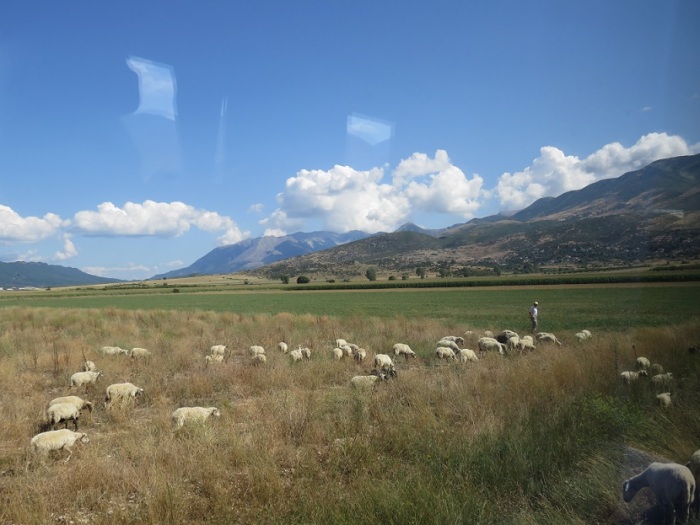
A joint Greek-Albanian specialists committee will continue its searches and exhumations in the other areas as well, the Greek Foreign Ministry said. 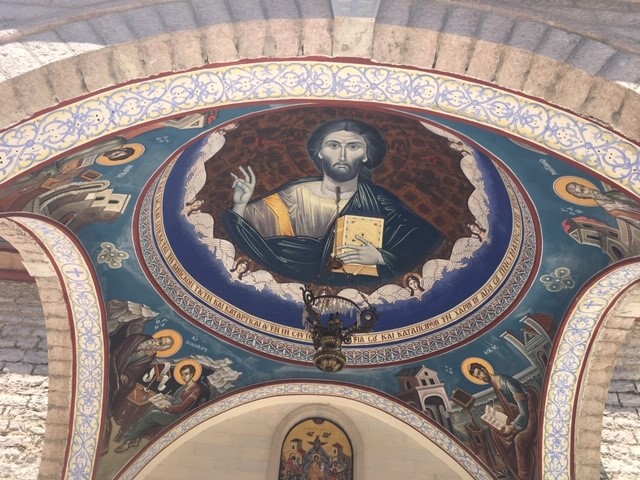
(Greek: Βουλιαράτι; romanized Vouliaráti) is a village in Gjirokastër County, southern Albania. At the 2015 local government reform it became part of the municipality of Dropull. It is inhabited solely by Greeks.[3] It is located just 6 km away from the Greco-Albanian border. Archeological findings (clay objects) discovered in 1979 prove that the village has been continuously inhabited since the 3rd century BC. The village has a 16th century Orthodox church, St. Athanasios. A battle occurred near the village during the Greco-Italian War, which resulted in a Greek victory with 15 casualties and 130 wounded (on the Greek side). Following the capture of the village and its surroundings by Greek forces, a temporary hospital was established to heal wounded soldiers, of whom 60 eventually died, however. A military graveyard was also erected, for casualties of other nearby battles. This is still open to the public today.
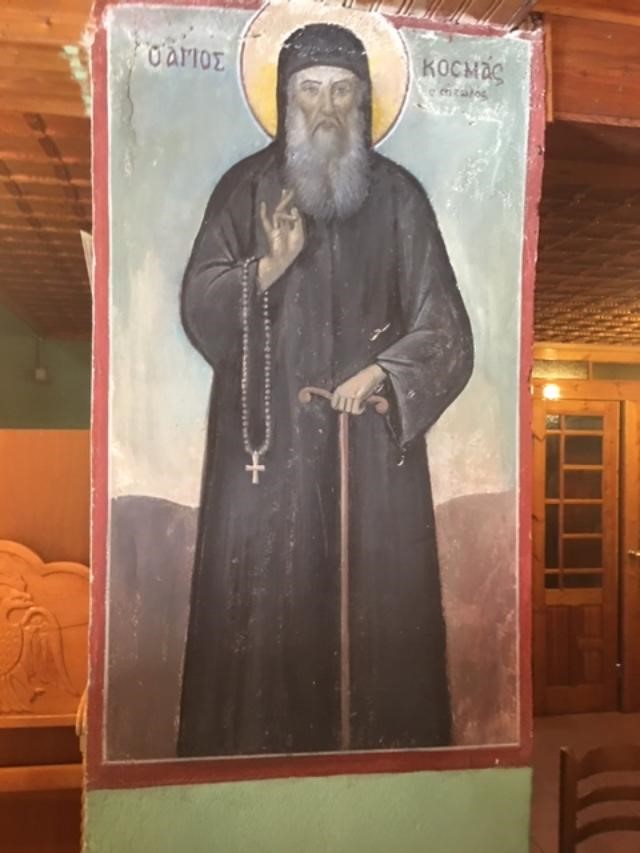
The first school was established in the 1700s. It was repaired in 1830 by donations from wealthy Georgios Kouremenos, the name of which was found on an inscription of a slab. In 1905, a girls-only school was established from expenses of architect Vasilakos Kouremenos. In 1935, Albanian authorities temporarily closed the school, resulting in reactions from locals, following clashes with the Albanian gendarmerie on 17 June.

In 1993, Albanian authorities arrested the mayor of the village due to offence caused by waving of Greek flags in the village during annual celebrations commemorating Greece’s entry to World War II.
According to the local newspaper, Το Γραφικό Βουλιαράτι, the village had 1,308 inhabitants in 1912. According to a 1995 research, the village had 833 inhabitants, of which all were ethnically Greeks. Since 1990, many Northern Epirotes have migrated to Greece or other countries, making the permanent population of the village less than 400. Despite this, the population doubles in Easter, Summer and Christmas as most people return to their village to celebrate or have holidays with their families. 2

Flocks of sheep were grazing on the site of one of the deadliest battles of the Greek/Albanian war. We entered the small church of Agia Skepi that houses the military cemetery of the Italian/Greek WWII war. Remains of ancient frescoes are displayed. The bones of a fallen hero are displayed with a Greek flag. An all-seeing Christ Pantocrator in the dome looked down on us. Inspiring icons decorated the altar.
Records of heroes missing in action are displayed. “Many of the Fallen heroes were from Corinth, Peloponnese,” observed scholar Doris Christopoulou. A monument should be erected in memory of the civilian population. Families lost fathers, husbands, children and brothers, never having closure by burying their loved ones. They are the real heroes: rebuilding their lives without the young men, bread winners of their family. How many Mothers, sisters, wives died of heartbreak, not wishing to go on without their missing in action men?
Rows of marble tombs were in the cemetery. A tomb for “The Unknown Missing in Action Hero” was seen. An icon of St. George in an Epirotan Greek costume gave us another view of how Greeks viewed St. George in their culture. I saw similar icons in churches of Tripoli, showing the saints in Peloponnesian clothing Guide Ioan Mitrou explained the importance of St. Cosmas Aetolos to the people of Epirus. “Over sixteen years, St. Cosmas established many church schools in villages and towns,” he said. St. Cosmas Aetolos’ preachings’ had aroused the opposition of the rich and powerful and others who felt their position threatened. He was executed at Kolkondas, Fier District, near the mouth of the Seman river (in present-day Albania) in 1779.
In 1813 Ali Pasha, the de facto independent Muslim Albanian ruler of Ottoman Epirus, southern Albanian and Macedonia, and an enemy of the Sultan – managed to have a church built near the site of Cosmas’ execution, in which the remains of Cosmas were placed. Ali Pasha went as far as having a date of celebration set in Cosmas’ honor. Some other Muslims disliked Ali Pasha’s “giving too much honor to a giaouri“, to which the Pasha reportedly replied: “Bring me a Muslim like him, I would kiss his feet.” 3
The Greek viewpoint is rarely seen. It was time for me to see a politically incorrect perspective that is not promoted by global interests.
Kostoula Kapogiannis, dynamic group leader of the Kapogiannis Tours, created a successful and historic excursion. Albanian guide Ioan Mitros was unique. Administrator Maria Kapogiannis has been working with me for several years in her excursions. Special appreciation to scholarly advice by retired Greek Guide Doris Christopoulou. Theodora Armoni of Replay Net and Billiards, Tripoli, Greece furnished technical support.
This visit to Bularat was part of a six-day Dalmation coast excursion for 330 euros. visit http://www.kapogiannistravel.gr/
https://photos.app.goo.gl/44WKx9RdJMikddbd7
References:
- https://www.thenationalherald.com/216466/fallen-greek-soldiers-of-wwii-reinterred-in-albanian-military-cemetery/
- https://en.wikipedia.org/wiki/Bularat
- https://en.wikipedia.org/wiki/Bularat
Links:
Greek military cemetery at the Church of Agia Skepi, Bularat (Vouliartes) Albania.


















